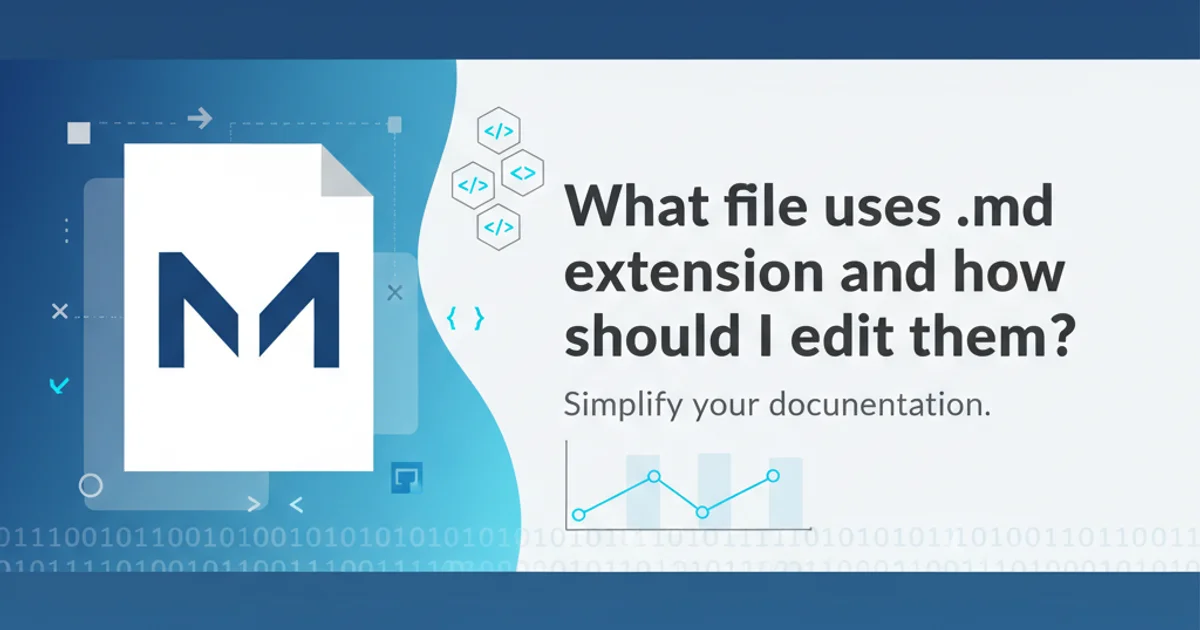What file uses .md extension and how should I edit them?
Categories:
Understanding and Editing .md Files: Your Guide to Markdown

Explore what .md files are, why Markdown is popular, and the best tools and practices for creating and editing these versatile documents.
The .md file extension signifies a Markdown file, a plain text format designed for easy readability and straightforward conversion to HTML. Markdown has become a ubiquitous tool for documentation, README files in software projects, blog posts, and even simple note-taking due to its simplicity and effectiveness. This article will delve into what Markdown is, its core syntax, and the various ways you can create and edit .md files.
What is Markdown?
Markdown is a lightweight markup language created by John Gruber and Aaron Swartz in 2004. Its primary goal is to enable people "to write using an easy-to-read, easy-to-write plain text format, and optionally convert it to structurally valid XHTML (or HTML)". Unlike word processors that hide formatting behind buttons, Markdown uses simple, intuitive symbols directly within the text to indicate formatting. For example, asterisks for italics or bold, and hash symbols for headings.
flowchart TD
A[Start with Plain Text] --> B{Add Markdown Syntax}
B --> C[Easy to Read Format]
C --> D{Convert to HTML?}
D -->|Yes| E[Rendered Web Page]
D -->|No| F[Stay as Plain Text]
E --> G[End]
F --> G[End]Basic Markdown Workflow
Common Markdown Syntax
Markdown's power lies in its simplicity. Here are some of the most frequently used syntax elements you'll encounter and use when working with .md files.
# Heading 1
## Heading 2
**Bold text** or __bold text__
*Italic text* or _italic text_
- List item 1
- List item 2
- Nested list item
1. Ordered list item 1
2. Ordered list item 2
[Link Text](https://www.example.com)
`Inline code`
```python
print("Code block")
Blockquote example
*Examples of common Markdown syntax*
Many Markdown editors offer a live preview feature, allowing you to see how your formatted text will appear as you type. This is incredibly helpful for learning and debugging your Markdown syntax.
## How to Edit .md Files
Editing `.md` files is straightforward, as they are essentially plain text. You have several options, ranging from basic text editors to specialized Markdown applications.
### 1. Using a Basic Text Editor
Any plain text editor like Notepad (Windows), TextEdit (macOS), or Vim/Nano (Linux) can open and edit `.md` files. Simply open the file, make your changes, and save. The downside is that these editors don't provide syntax highlighting or a preview.
### 2. Using a Code Editor with Markdown Support
Popular code editors such as Visual Studio Code, Sublime Text, and Atom offer excellent Markdown support. They typically include syntax highlighting, live preview, and sometimes even advanced features like table formatting or spell checking for Markdown files. This is often the preferred method for developers.
### 3. Using a Dedicated Markdown Editor
There are many applications specifically designed for Markdown, such as Typora, Obsidian, Joplin, or StackEdit (web-based). These editors often provide a 'what you see is what you get' (WYSIWYG) experience, where the Markdown syntax is rendered directly as you type, making the editing process very fluid and visually appealing.
### 4. Online Markdown Editors
For quick edits or sharing, online tools like Dillinger.io or StackEdit.io allow you to write Markdown in your browser, often with live preview and export options. These are great for collaborative work or when you don't have access to your preferred desktop editor.
While Markdown is largely standardized, there are several 'flavors' or extensions (e.g., GitHub Flavored Markdown - GFM, CommonMark). Most editors support GFM, which includes features like task lists, tables, and strikethrough text.